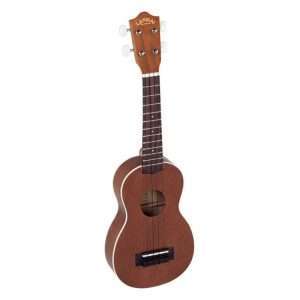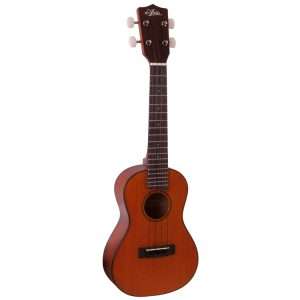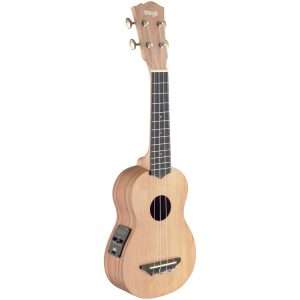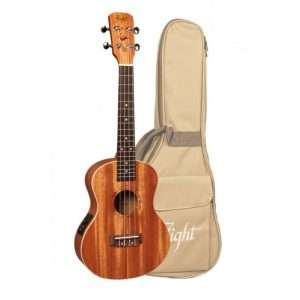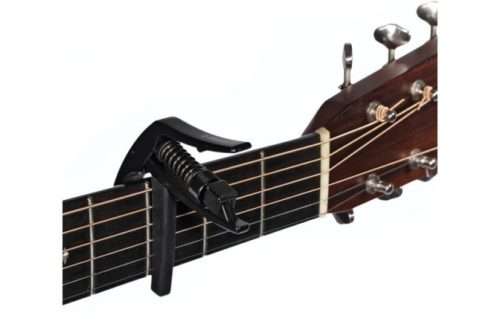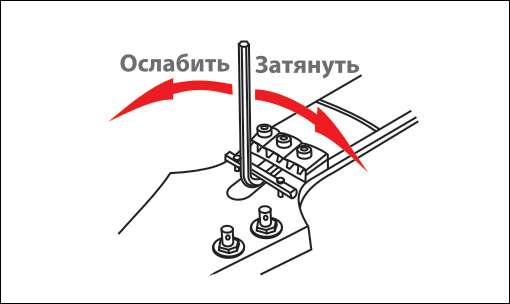
How to choose an Ukulele
Contents
Ukulele (from the Hawaiian ʻukulele [ˈʔukuˈlele]) is a Hawaiian four-stringed plucked musical instrument, or with double strings, that is, eight-string.
The ukulele is common in various Pacific islands, but has been associated primarily with Hawaiian music since the Hawaiian musicians toured at the 1915 Pacific Exposition in San Francisco.
The name is translated according to one version as “jumping flea”, since the movement of the fingers when playing the ukulele resembles the jumping of a flea, according to another – as “a gift that came here.” The ukulele guitar can be of various shapes, both standard, guitar-shaped, and pineapple-shaped, paddle-shaped, triangular, square (often made from cigar boxes), etc. It all depends on the imagination of the master.
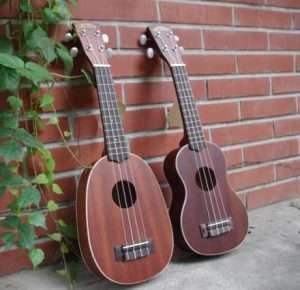
Ukulele in the shape of a pineapple and a guitar
In this article, the experts of the store “Student” will tell you how to choose the ukulele that you need, and not overpay at the same time. So that you can better express yourself and communicate with music.
Ukulele device
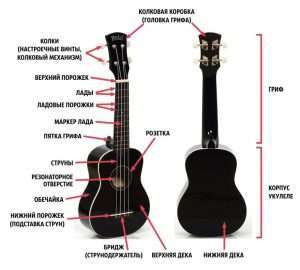
1. Pegs (peg mechanism ) are special devices that regulate the tension of the strings on stringed instruments, and, first of all, are responsible for their tuning like nothing else. Pegs are a must-have device on any stringed instrument.

kolki
2. Nut – a detail of stringed instruments (bowed and some plucked instruments) that raises the string above the fingerboard to the required height.
3. Frets are parts located along the entire length of the ukulele neck , which are protruding transverse metal strips that serve to change the sound and change the note. Also fret is the distance between these two parts.
4. Fretboard – an elongated wooden part, to which the strings are pressed during the game to change the note.
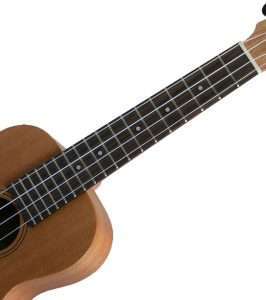
Ukulele neck
5. The heel of the neck is the place where the neck and body of the ukulele are attached. The heel itself can be bevelled for better access to the frets . Different ukulele manufacturers do it in their own way.
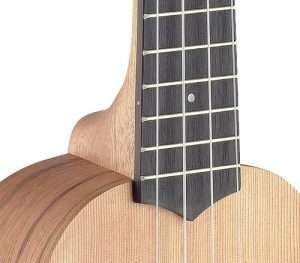
Ukulele neck heel
6. Deca (lower or upper) – the flat side of the body of a stringed musical instrument, which serves to amplify the sound.
Types of ukulele
There are 4 types of ukulele:
- soprano (total length 53 cm)
- concert (58 cm)
- tenor (66 cm)
- baritone (76 cm)

soprano, concert, tenor, baritone
The soprano is a classic of the genre, but it can be difficult to play something complex on it, especially in the upper positions, because. Frets are very small.
Concert ukulele – it looks like a soprano, but a little more, it is more convenient to play it.
The tenor has a little less ukulele charm, but because the structure is the same as that of the soprano, the differences in sound are not significant, but people who are accustomed to the guitar neck will find this size more convenient.
A baritone is like a guitar without two bass strings. The sound is closest to the guitar, it makes sense for those who do not want to relearn after the guitar at all or for members of the ukulele orchestra who have chosen a bass instrument.
Tips from the store Student on choosing a ukulele
- The musical instrument model should please you .
- Carefully inspect it from all sides for an object, cracks, bumps. The neck must be level.
- Ask a store consultant to set up the tool for you. Given the first setting of the instrument, you will have to set it up several times. The reason is that the strings are not yet stretched, which will take several days to adjust to the tuning.
- After tuning the instrument, be sure to check that it builds on the 12th fret .
- Be sure to check all frets on all strings. They should not build or “ring”.
- Pressing the strings should be light , effortless, especially on the first two frets .
- Nothing should rattle inside the instrument . The right ukulele has a long and open sound. The strings are the same in clarity and volume.
- An instrument with an included built-in pickup should be connected to the amplifier and tested.
How to choose a ukulele
Ukulele examples
Soprano Ukulele HOHNER Lanikai ULU21 |
Concert Ukulele ARIA ACU-250 |
Electro-acoustic soprano ukulele STAGG USX-ROS-SE |
Ukulele tenor FLIGHT DUT 34 CEQ MAH/MAH |



